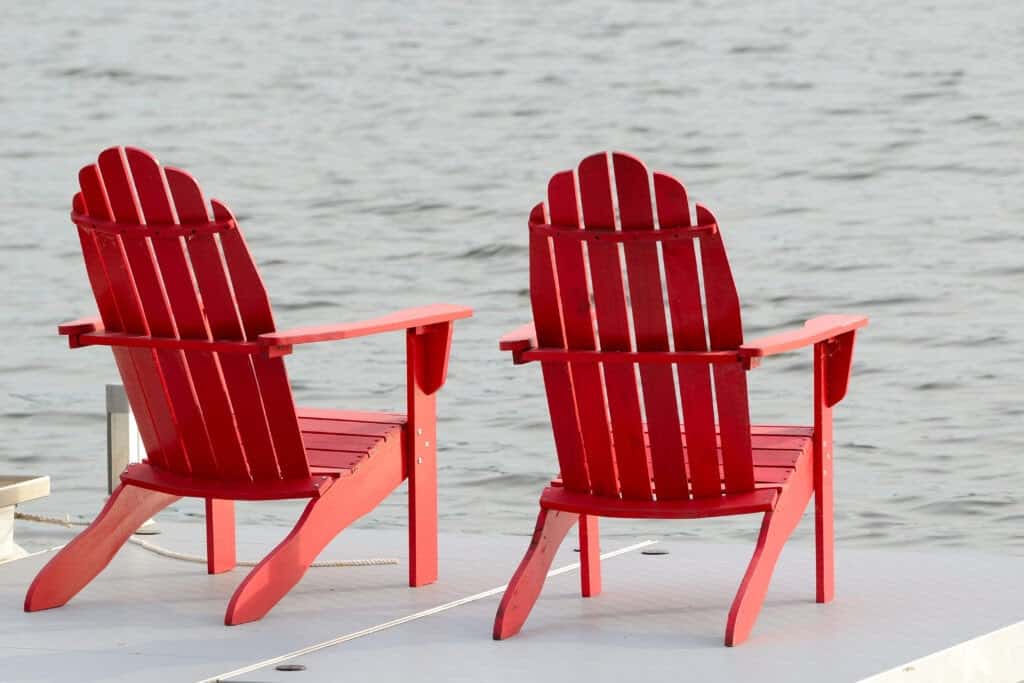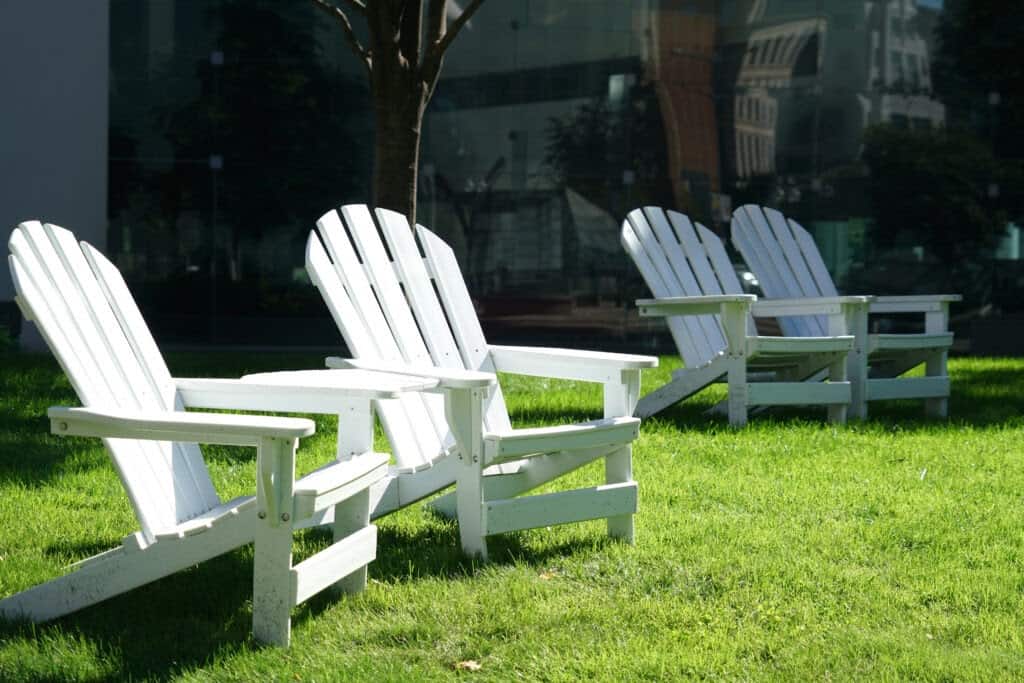Most deck owners and beach lovers know that Polywood chairs tend to be a staple in many outdoor yards or beach environments. They are pretty eye-catching and comfortable, plus they add a nice overall aesthetic to any place, however, they also tend to come at bank-breaking prices. So, the question is, are Polywood chairs even worth that price?
Many customers would agree that Polywood chairs are indeed worth the price, costly as it may be. Polywood chairs are sturdy, attractive, made out of recycled plastic, and tend to be fairly comfortable. Those qualities alone are often enough to convince most buyers.
If you are anything like most people, you would probably want to know a tad more about these chairs before you decide to purchase them. Below you will find some of the pros and cons of buying Polywood furniture. Hopefully, knowing about these pros and cons will help you to make the best decision, not only for yourself but for your wallet!
Why Is Polywood So Expensive?
Before we discuss the pros and cons, let’s talk a little bit about what Polywood is and why it is so expensive. Polywood is made using high-density polyethylene (HDPE), which consists mostly of consumer plastic waste (milk jugs, water bottles, any other recycled plastics). This design is actually instrumental in keeping Polywood chairs safely guarded against the elements. This is why they are so popular as outdoor furniture.
Recycled plastic furniture is easy to come by, so why are these so pricey? The truth is that while the materials are readily available, the process to manufacture them is quite expensive. Part of this process includes putting the substance through a decontamination process, which is all part of making it the purest material possible.
The cost of this process is, unfortunately, passed on to the buyers of Polywood furniture. As mentioned before, it is really up to the buyer to decide whether or not purchasing Polywood chairs is worth the extra cost. So, without further ado, let’s talk about some of the pros and cons!
Pros and Cons of Buying and Having Polywood Chairs

While they are said to be durable and pleasing to the eye, Polywood chairs do come with their weaknesses. Below is a list of some of the most important pros and cons to know before investing in Polywood outdoor furniture. When you’re through, you should be able to make an informed decision.
Pros
First, as mentioned above, Polywood is an extremely durable material. All Polywood chairs are waterproof and UV light-resistant. Wood furniture can be coated with a finish and protective chemicals, but over time, water can corrode those protective layers and seep inside the wood, which results in rot and damage. Polywood will not fall victim to water damage of any kind!
Wood can also be damaged with too much sun/UV light exposure. If your furniture is constantly sitting out in the sun, this could cause the wood to warp over time and start to lose its color. Painting is completely unnecessary since Polywood chair colors don’t usually fade over time (regardless of the circumstances). Polywood chairs can hold up fine under pretty much any kind of weather and can withstand even the most severe temperatures. Polywood chairs do not crack, splinter, split, or fall apart unless they have been abused for years on end!
Thanks to its mostly plastic construction, Polywood chairs will not attract pests of any kind (insects, termites, etc.). Even if you did have bugs trying to chew their way through the chair, it simply wouldn’t work because of how durable it is. Additionally, your chairs will be safe from salt corrosion, chemical sprays, oils, and all other kinds of chemicals and substances.
Not only will the colors of your Polywood chairs remain as vibrant as ever for years to come, but you can also find dozens of different colors from which to choose. Because HDPE is pretty transparent, it can be infused with just about any color you can think of. Whether it’s bright red or earthy green, Polywood will have it.
There is a shade and a style for pretty much everybody out there! And speaking of versatility, Polywood can be fashioned into just about anything. You can have a Polywood table, chairs, benches, or even just Poly lumber for at-home projects. Whatever its shape, Polywood will serve you very well.
As mentioned before, Polywood is made up of HDPE, whose largest component/base ingredient is recycled plastic and cardboard. Though it may be expensive to manufacture, Polywood is environmentally friendly. The constant cutting down of trees will often result in deforestation. On the positive side, recycling and using plastic to create furniture limit the amount of waste that occurs.
Polywood chair maintenance is a piece of cake. Since most substances don’t corrode or damage the chair in any way, all you really have to do is give it a good cleaning whenever the situation warrants it. Scrub it down with warm water and soap when it starts to look a little dingy. If there are any tough stains that you just can’t get rid of, try using a little bleach in your water and a soft-bristled brush. Power washers also work well to clean Polywood.

Cons
While these may sound like the perfect product, Polywood chairs do have a couple of downsides, the biggest one being the price. Polywood chairs definitely add a nice aesthetic to your yard, but they are excessively pricey. For some people, all the positive characteristics of a Polywood chair are simply not enough reason to justify spending that kind of money. Again, this is a matter of personal opinion and circumstance, but it should be heavily considered before buying Polywood furniture. The cost range can be anywhere from $200-$3,000, so plan accordingly!
Another issue is that some Polywood chair designs are extremely rigid. The furniture is hard enough as it is, but if you buy a chair with an upright backrest, chances are you won’t be very comfortable while sitting in it. Most people opt for a curved back chair or some chair pillows to help make the seat a bit more comfortable.

